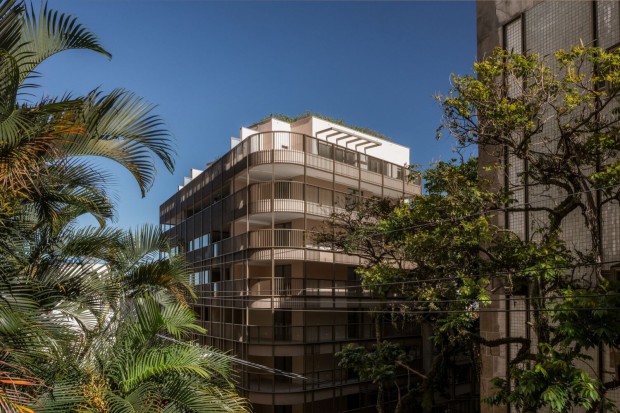Cité Arquitetura spearheaded the construction of the Igara building in Brazil, renowned for its earthy and elegant design. The architectural masterpiece reportedly reflects a harmonious blend of sophistication and natural elements.

(Photo : ArchDailyAndre Nazareth )
Inspiration for Igara Building
With its location at the intersection of Igarapava and Sambaíba streets, the Igara Building is in the lower portion of Alto Leblon in Rio de Janeiro. Citée Arquitetura created its architectural design with partners Fernando Costa and Celso Rayol. Embyá and Interiores of Manga Rosa Arquitetura were responsible for the landscaping of the building.
As mentioned, a clear connection is established between the profession of the location and the names of the streets that surround it, which serves as the source of inspiration for Igara.
In conceiving the project, the etymology of the Tupi term 'Igarapava,' which translates to 'Canoe Port,' and the definition of 'Sambaíba,' the appellation of a tumultuous shrub indigenous to the Brazilian cerrado, were incorporated. Using its firmly established base, which functions similarly to a secure and significant port connected to the ground, the structure aims for the rising heavens.
Moreover, the building features a garden terrace that is situated above the rooftops and is intended to serve as a communal space. It comes from resting and features several varieties of coastal plants. Additionally, there is a vegetable garden and a spot where one may take in the scenery while enjoying a privileged view of the ocean. As one ascends to the utmost branch of a sturdy tree, the perspective from above evokes the same sense of astonishment.
On the other hand, the facade colors signify ascending to the sky and establishing a foundation, progressing from darker and earthy hues at the base to lighter and more delicate hues atop the structure. Under this arrangement, the substantial canopy of the tree would represent the structure itself, with a delicate lattice element representing this nest-like, branching closure that provides protection and embrace.
Also Read: Construction of the World's Tallest 3D Printed Tower Began Construction in the Swiss Alps
Charm of Using Natural Materials in Residential Buildings
Enhancing the look of your home without negatively impacting the environment can be accomplished via sustainable interior design. Sustainable design is not only beneficial to the environment, but it also has the potential to be an excellent method to give your living space a flair that is both intriguing and distinctive.
Utilizing materials that are both aesthetically pleasing and conscious of their impact on the environment is one of the most essential components of sustainable interior design. Furniture and flooring made from natural materials such as bamboo, cork, and recycled wood are excellent due to their resilience, longevity, and low energy requirements during production. Thus, the natural beauty they convey is something that manmade materials cannot replicate.
Furthermore, there are various strategies to create a sustainable environment, in addition to selecting natural materials. Using parts from older homes or structures that would otherwise be thrown away or transported to landfills makes reclaimed furniture an excellent choice. These items would otherwise be wasted. Reusing items not only gives your home a one-of-a-kind look but also helps reduce the amount of waste produced in our world.
Related Article: 5 Eco-Friendly Building Equipment That You Should Know







